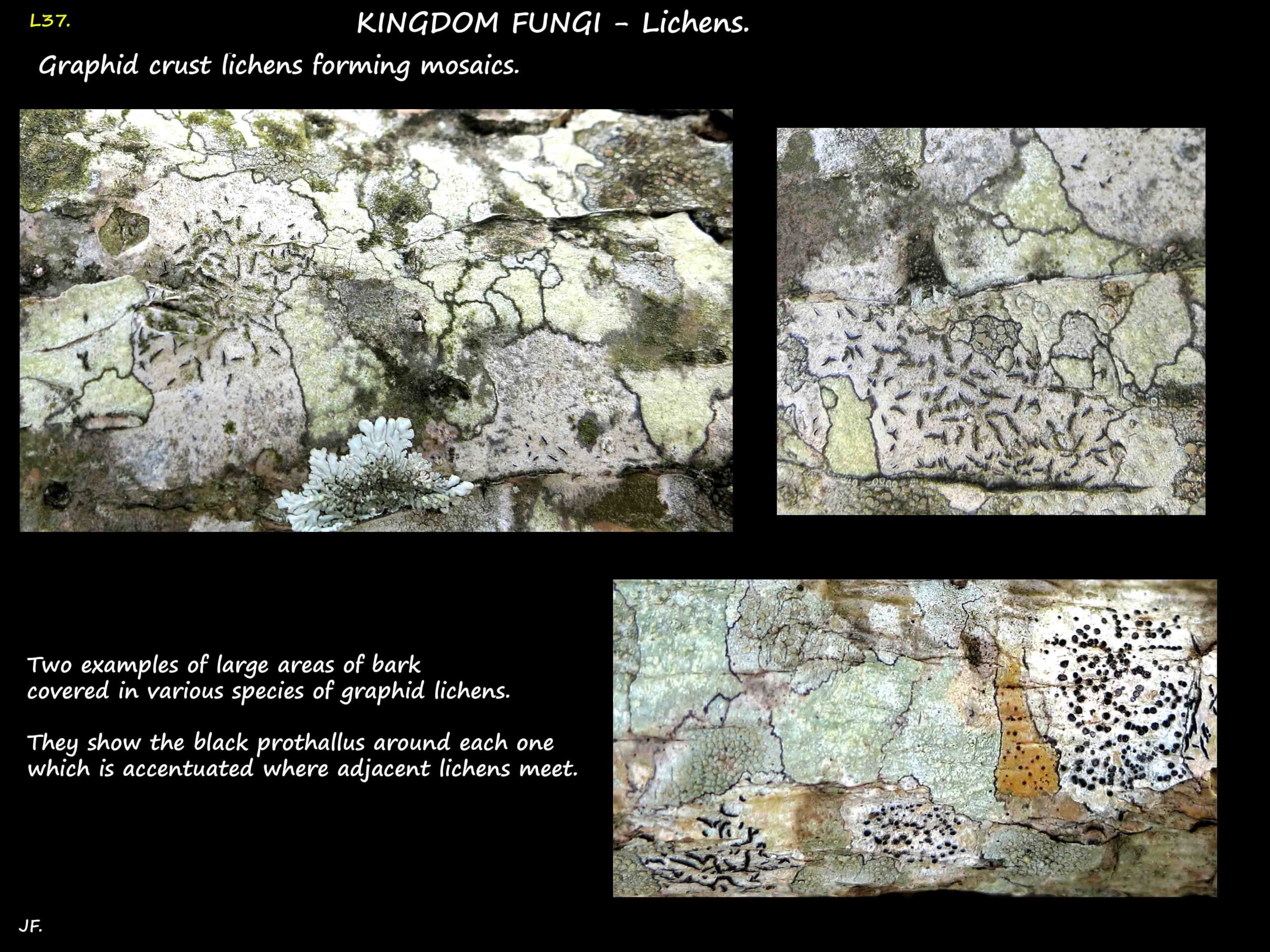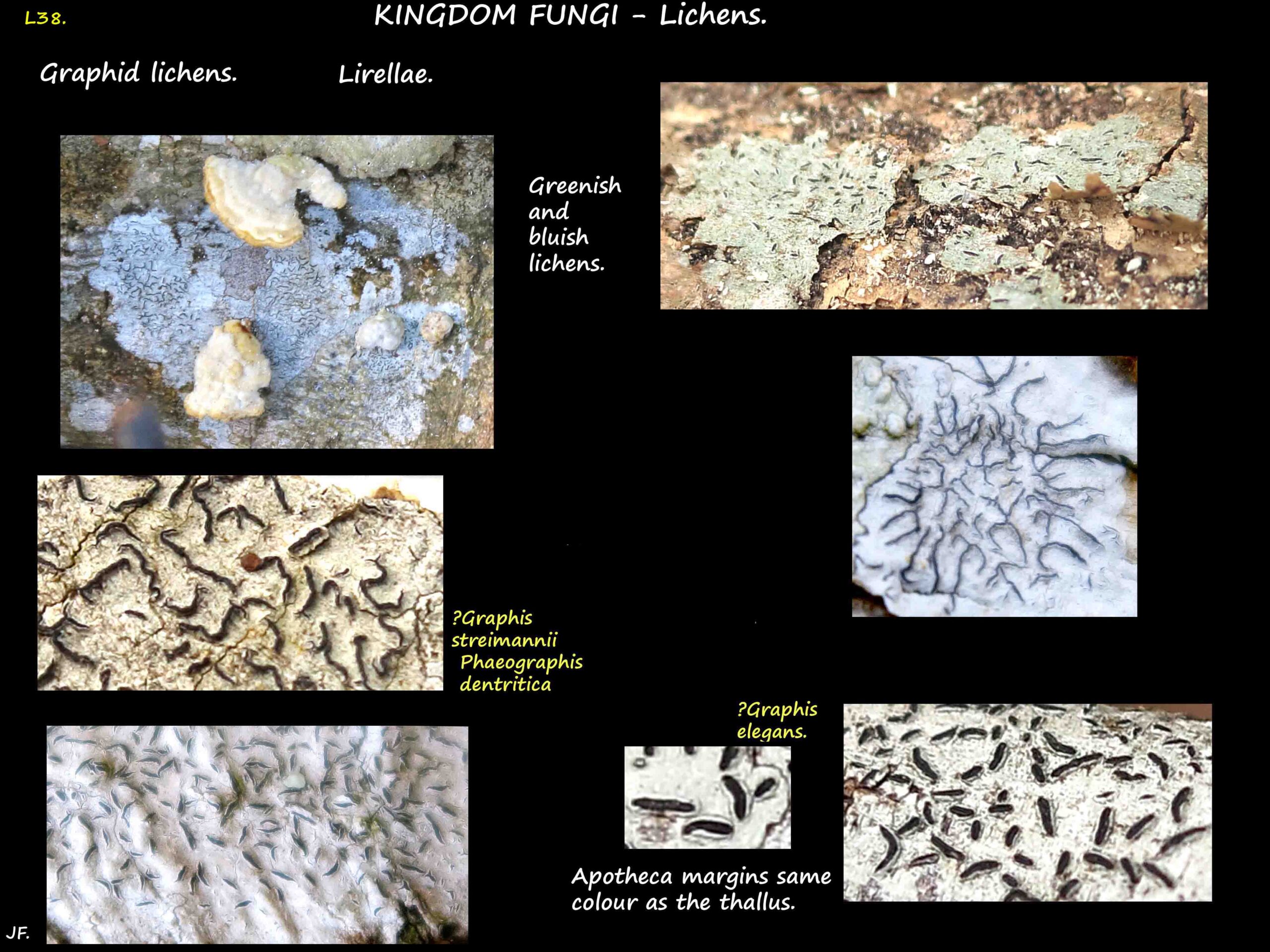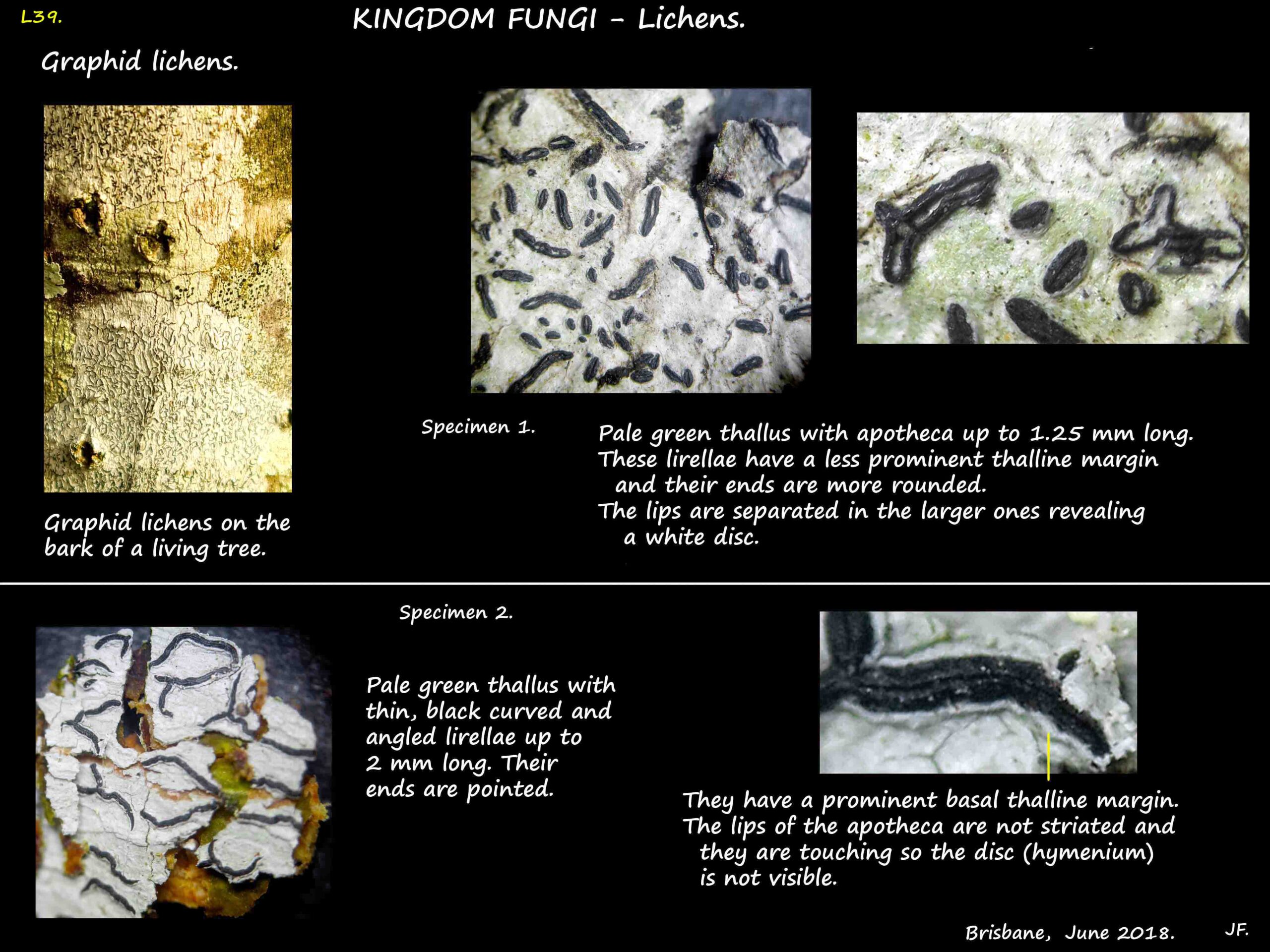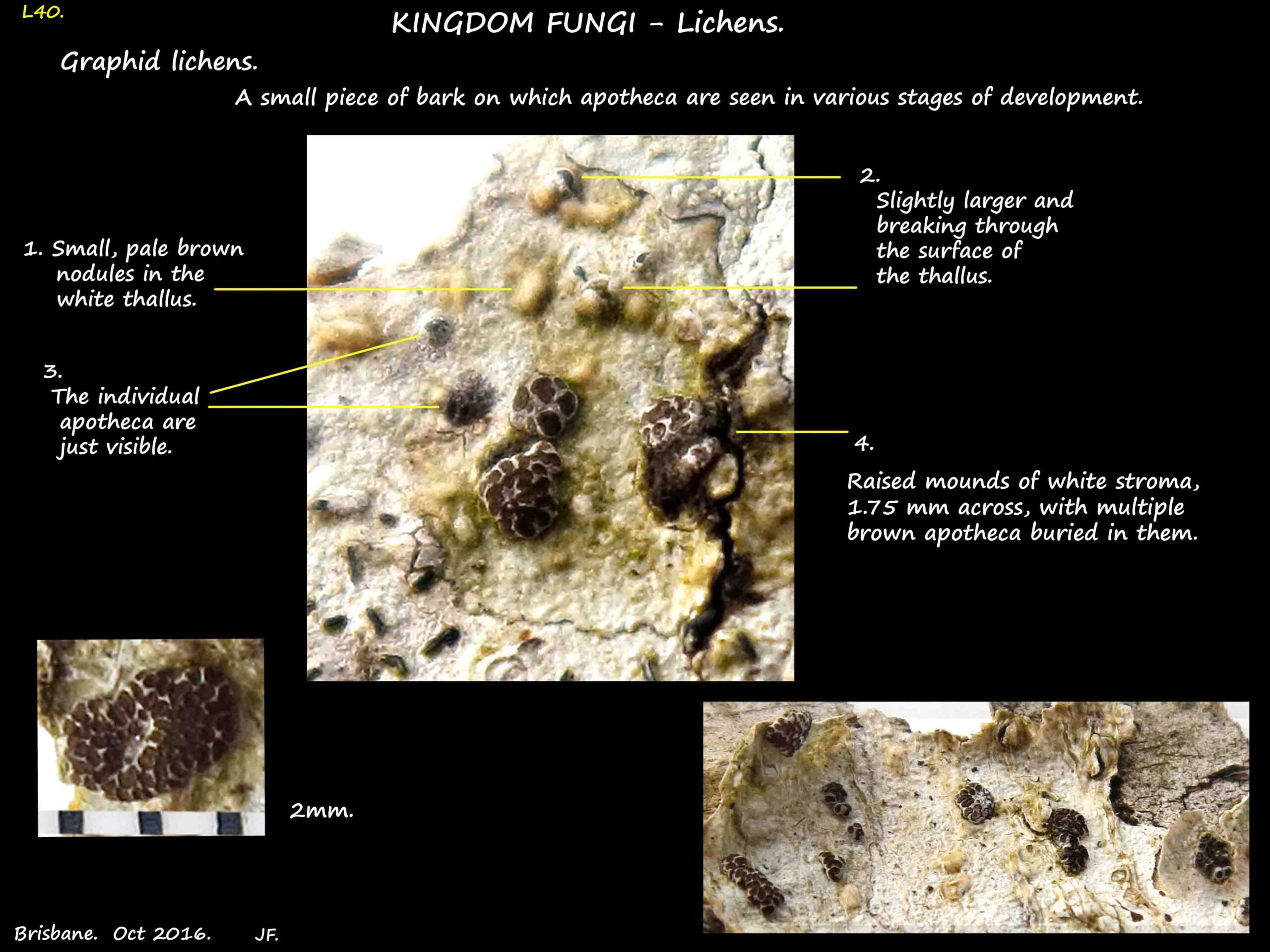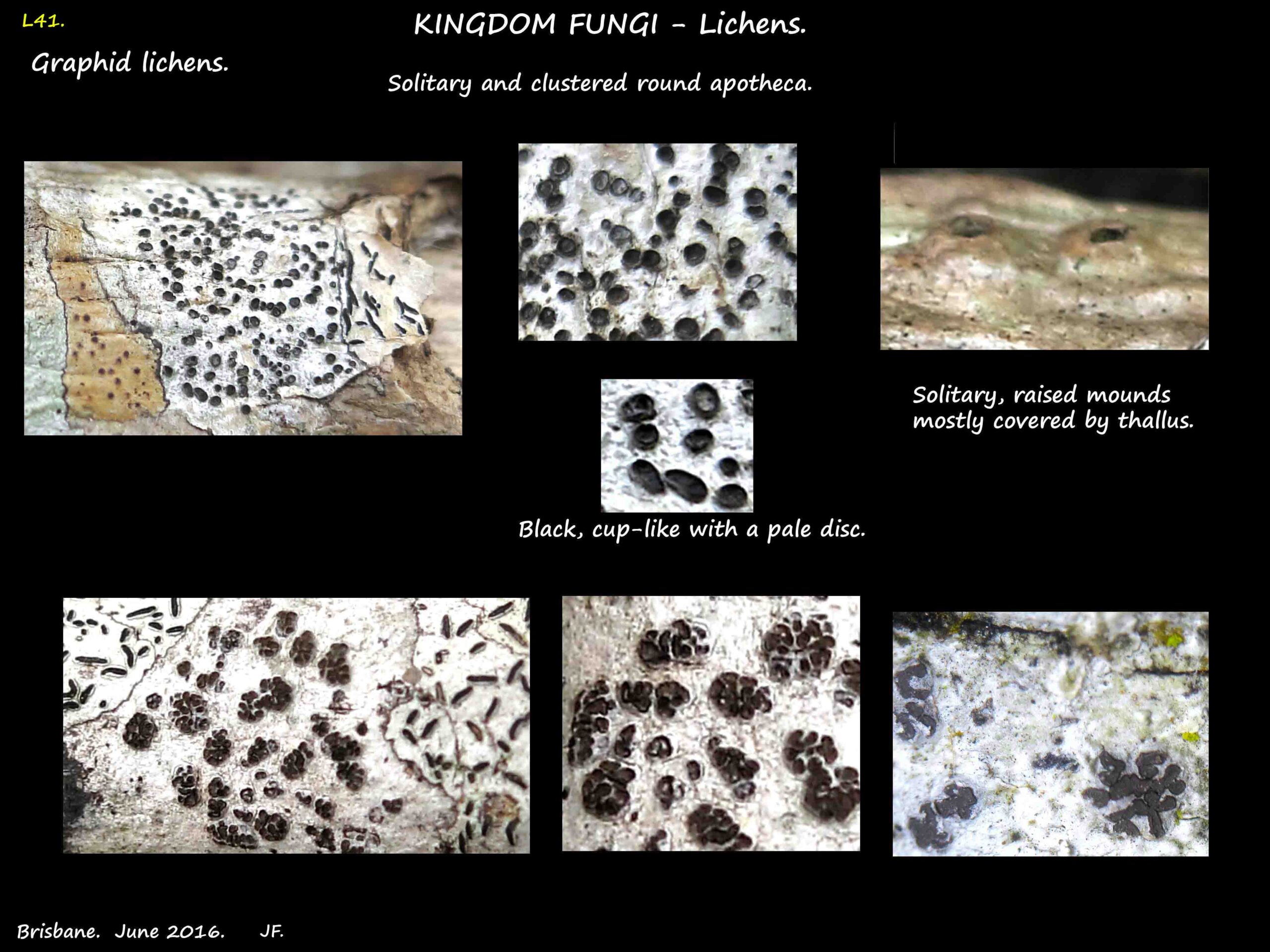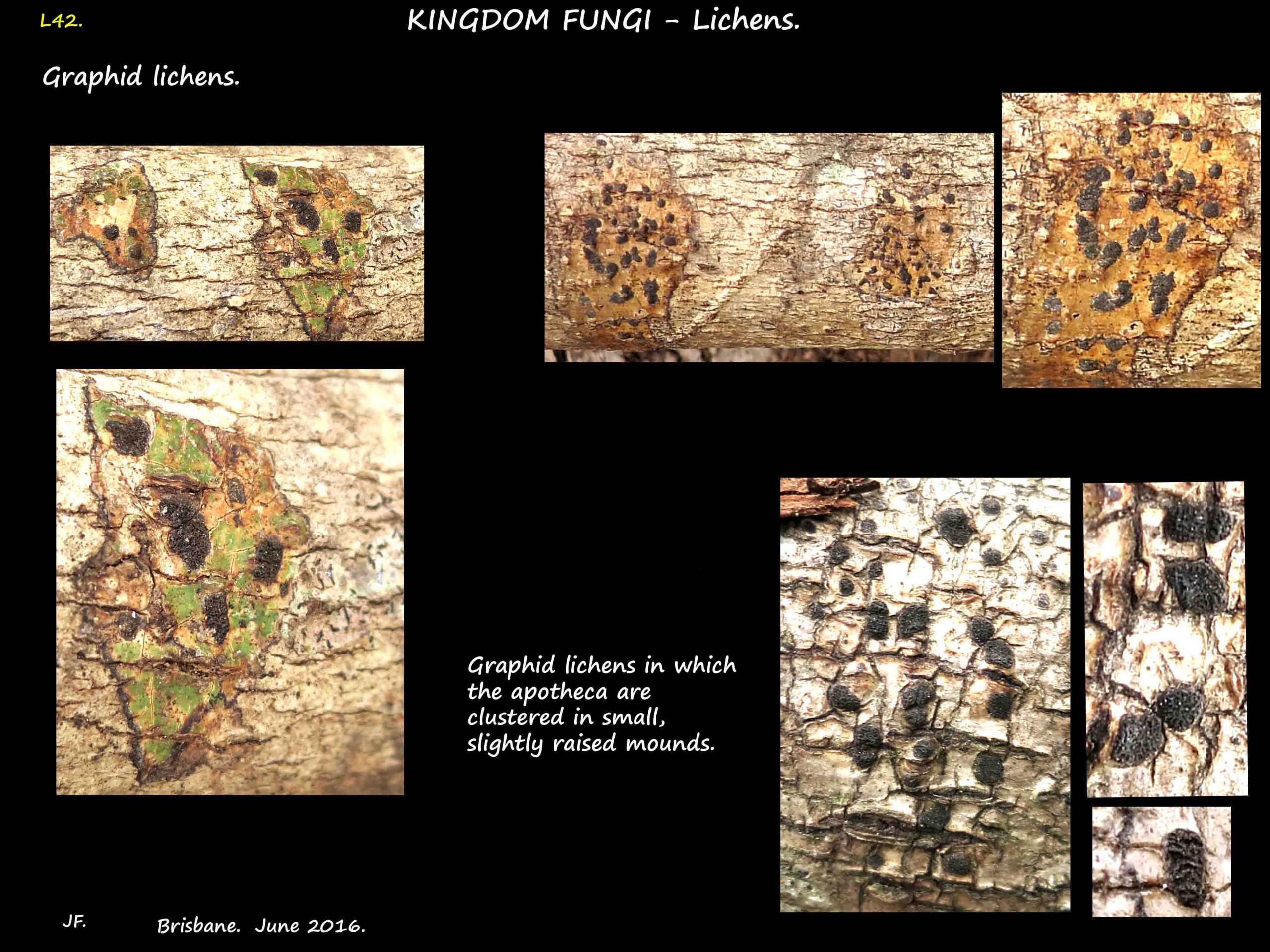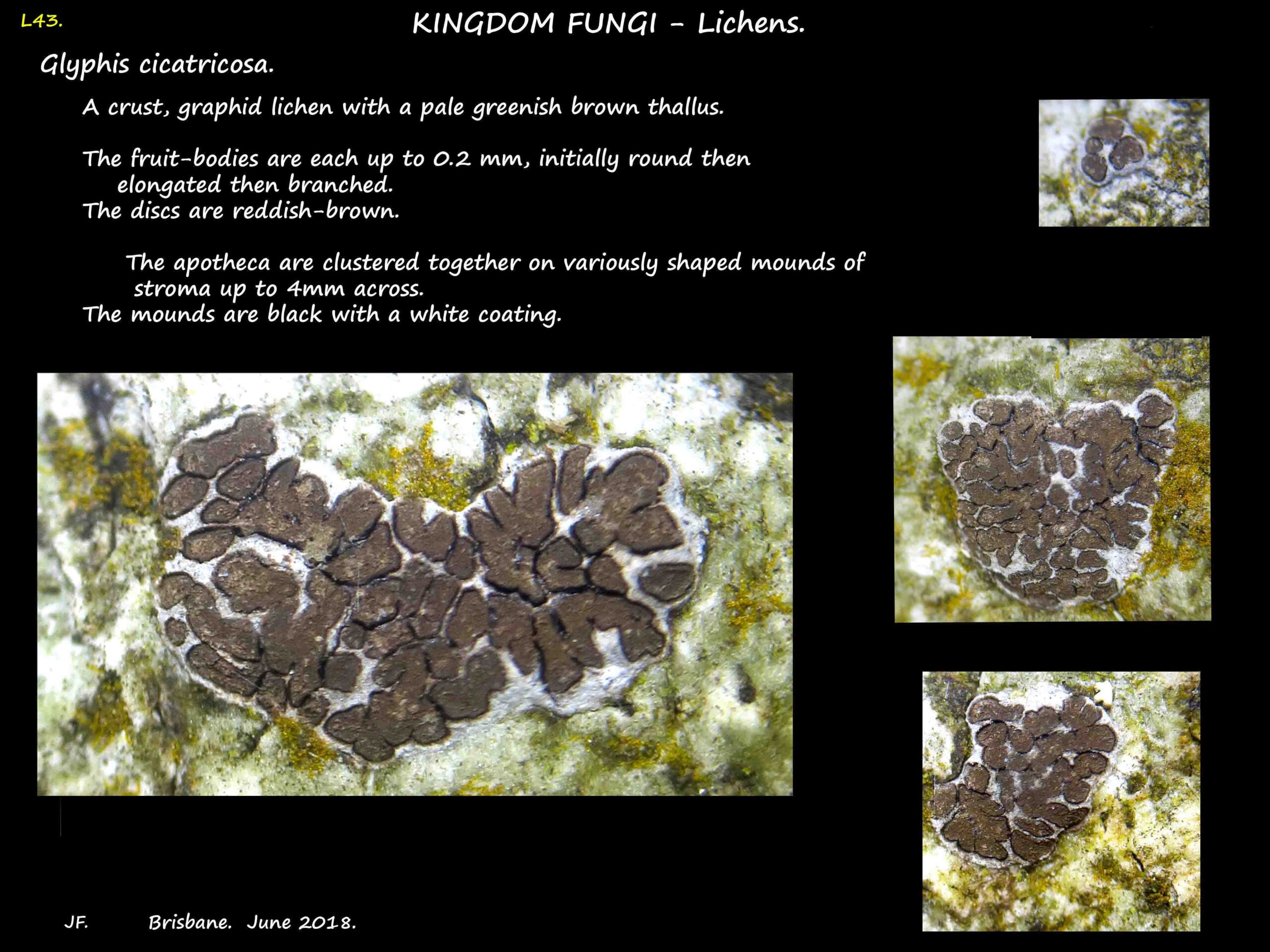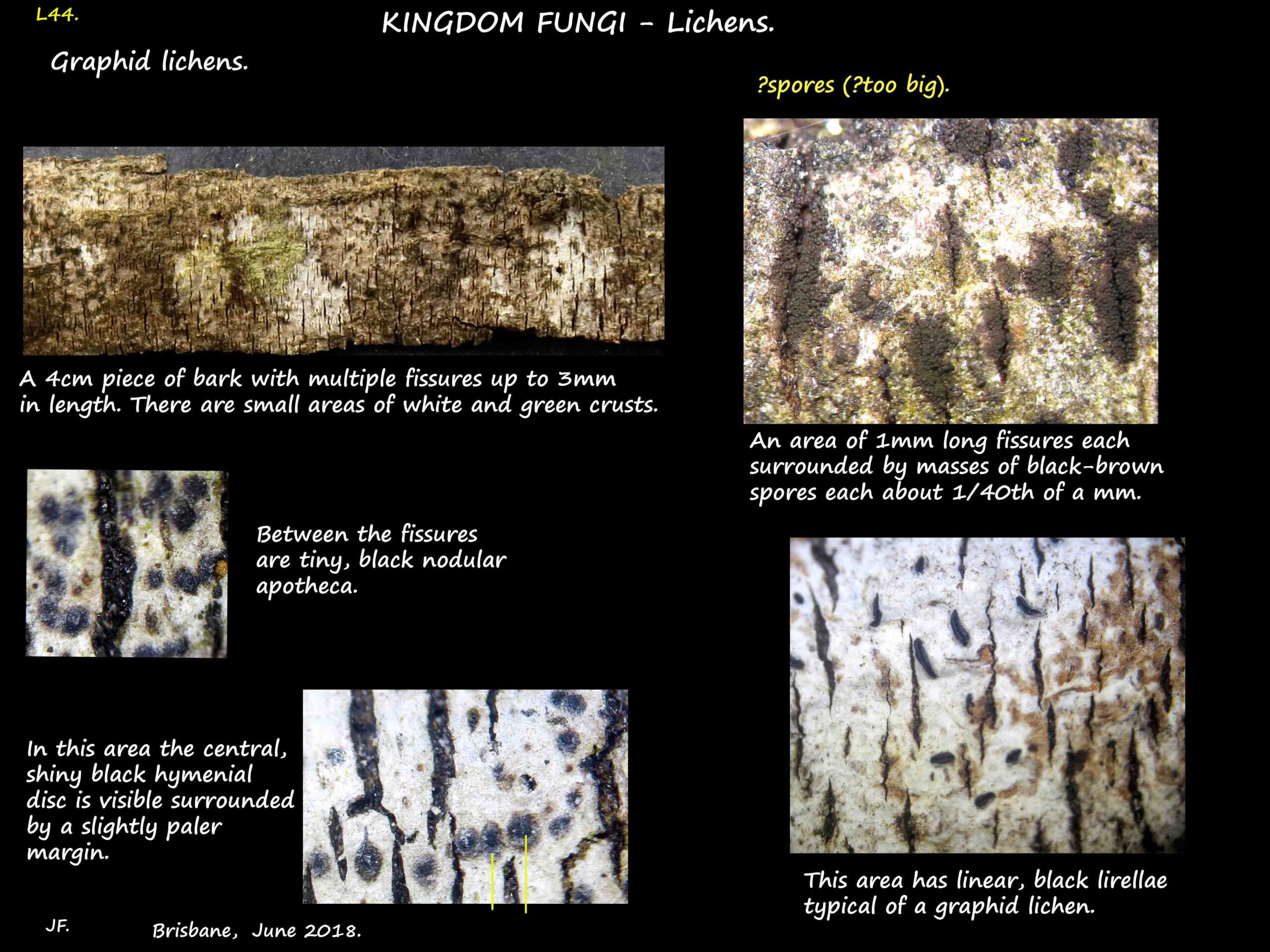Graphid or script lichens.
These are ascolichens (fungal component an Ascomycete) in which the fungal apotheca (fruit bodies)
can resemble writing.
They are a form of crustose lichen and occur in two orders of the Subphylum Pezizomycotina – the Ostropales
including the family Graphidaceae and some in the Order Arthoniales.
Graphidaceae has about 71 genera with over 2000 species – the largest group of all the lichenised fungi.
They grow mainly on plants but also on rocks.
The thallus may be white, grey, brownish, shades of yellow and green but also other bright colours.
It has no, or only a rudimentary cortex and is usually thin and firmly attached to the substrate.
The surface may be shiny or matt, flat, rough or unevenly thickened.
The apotheca may be the same colour as the thallus or different and scattered or clustered.
Characteristic graphid apotheca, known as lirellae, are long and narrow, straight or curved, star-shaped,
branched or slit-like.
Other apotheca are rounded or form small heaps.
They are often about 2 to 3 mm in size but can be 6 to 10 mm.
They may lie on the surface or partly in the thallus.
The spore bearing hymenium may be exposed or largely covered by the edges of the apothecium.
Many species are often found growing in the same area and where they meet there is often a black boundary
between them due to the prothallus around each becoming more obvious.
The prothallus is a rim of hyphae without any photobiont and may be white or reddish as well as black.
J.F.
